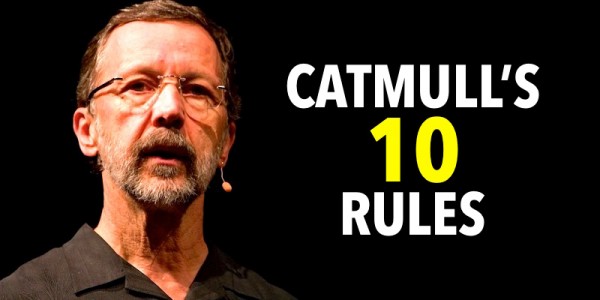Eric Ries is the creator of the Lean Startup methodology and the author of the popular entrepreneurship blog Startup Lessons Learned.
He previously co-founded and served as Chief Technology Officer of IMVU. In 2007, BusinessWeek named Ries one of the Best Young Entrepreneurs of Tech and in 2009 he was honoured with a TechFellow award in the category of Engineering Leadership.
He serves on the advisory board of a number of technology startups, and has worked as a consultant to a number of startups, companies, and venture capital firms. In 2010, he became an Entrepreneur-in-Residence at Harvard Business School.
Here are the 10 success lessons from Eric Ries – “The Lean Startup” for entrepreneurs,
1. The least important thing in every startup is … your big idea
Many people out there think that business success depends on one original idea. For starters, most successful businesses aren’t that original, but they are good at what they do, they understand their market and continuously adapt to serve their target client base.
More importantly, it’s not the idea but the execution that reigns supreme. As Eric Ries puts it, “Only 5% of entrepreneurship is the big idea, the business model, the whiteboard strategising and the splitting up of the spoils.
The other 95% is the gritty work that is measured by innovation accounting: product prioritisation decisions, deciding which customers to target or listen to, and having the courage to subject a grand vision to constant testing and feedback.”
2. Get out and interact with customers
Customer feedback is vital for a startup no matter what size it may be, but it’s especially crucial in the early stages of growth. Get out and talk to your customers. Find out what they can and can’t live without. Prod and ask the tough questions. Good feedback is priceless and goes far beyond what analytics can provide.
3. Failing quickly is a good thing
Ultimately, The Lean Startup model is all about starting small, learning big, testing your proposition in the market and adapting to the feedback you’re receiving.
You can spend 6 months building up your business plan and doing market research, stuck in “analysis paralysis”, invest money, hire a team, then launch your product and spend 6 more months, convincing yourself “it takes time”, whereas what you should be doing is following your “baby” with a magnifying glass, set tests and learn from the results.
And if your prototype project fails? Bravo! That’s a result, isn’t it? Now, what went wrong? And why? In fact, Eric Ries recommends asking “Why” five times to get to the bottom of the problem and find a way to fix it. If you start small and launch quickly, if your first prototype fails, you can rapidly tweak your proposition and march onwards.
4. Avoid measuring with vanity metrics
Most of us fall victim to it. Vanity metrics are the numbers that may appear to be beneficial, but are actually misleading in that they provide a false sense of accomplishment.
If a product is seeing more signups month over month, is it because of an improvement in the product, a search marketing campaign, or something else? An educated guess is still just a guess.
5. Focus on Minimum viable product
A minimum viable product (MVP) is the “version of a new product which allows a team to collect the maximum amount of validated learning about customers with the least effort.”The goal of an MVP is to test fundamental business hypotheses (or leap-of-faith assumptions) and to help entrepreneurs begin the learning process as quickly as possible”.
6. Surround yourself with entrepreneur who are willing to experiment
No man is an island of knowledge and hence the need for co-founders. However the ideas of having co-founders goes beyond just adding up numbers to compliment your area of weakness. Co-founders are like a single individual comprising of different bodies, and as such they all want the same thing regardless of the direction it is located.
Eric Ries laments about how his bright looking ideas at the beginning all of a sudden followed the sharp diminishing return slope and eventually hit rock bottom. The case would have been disastrous if he and his co-founders were too scared to try new things.
He later went on to describe how fortunate he was having co-founders (with Steve Blank as investor and adviser) who were willing to experiment with new approaches turned things around.
7. There’s more to the future of your startup
The greatest threat to the growth of your startup is the allure of a good plan, and surprisingly, a lot of startups have been caught in this web.
It is becoming harder predicting the future as each day passes, therefore planning and forecasting are necessary and more importantly; accurate when based on a long, stable operating history and a relative environment.
8. Focus on split testing
A split test or A/B test is an experiment in which “different versions of a product are offered to customers at the same time”. The goal of a split test is to observe changes in behaviour between the two groups and to measure the impact of each version on an actionable metric.
9. Never make assumptions
Assume nothing and test everything is the mantra of a lean startup. Ries points out multiple times, with companies both large and small, that even our best assumptions are often incorrect. Leave as little to chance as possible.
10. Turn awareness into sales
His strategy in growing awareness and sales of his book: “Use early adopters to drive the message to the gatekeepers of the mainstream.” He had been blogging for 2 years prior to the book and is a popular speaker.
But, Eric points out that engaging people via a blog post is one thing, getting them to pull out their credit card is another – much harder – task. “It took me a long time to learn how to talk about the book in a way that it would get people to buy it without coming off as some jerk self-promoter,” he said.



